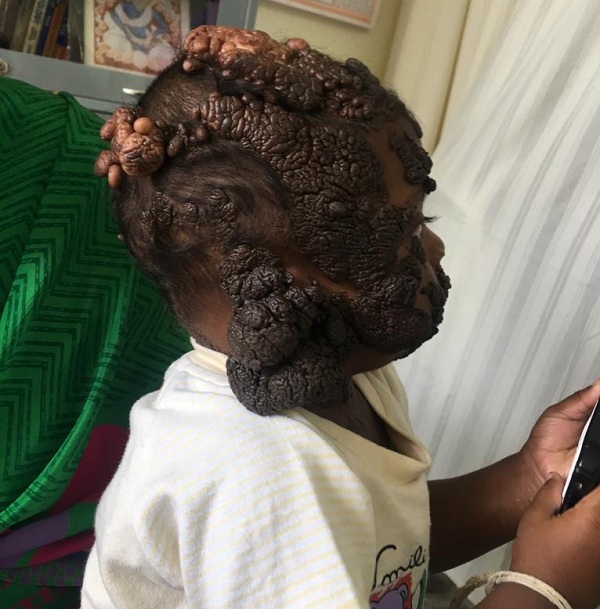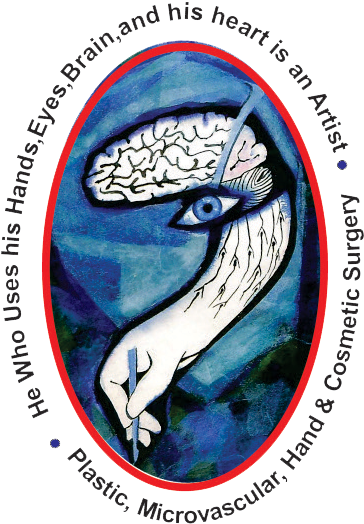Vascular Malformations
Vascular malformations are a type of birthmark or a growth, often present at birth and composed of blood vessels that can cause functional or cosmetic problems. Congenital or acquired blood vessel abnormalities can involve arteries, veins, capillaries, & combinations of these blood vessels.

We use the term “vascular anomalies” to describe a number of abnormalities that affect children and young adults. These anomalies look like a blemish or mass that may cause pain, swelling, or bleeding. Vascular malformations often result from abnormal development in blood vessels, lymph vessels, veins, and/or arteries. They are rare and complex and the experts at Cosmo Polyclinic have extensive experience diagnosing and treating these conditions.
Vascular malformations are usually present at birth, grow proportionally with the child, do not expand rapidly during infancy, and do not disappear. We sometimes see vascular malformations in older people, as blood flow increases through abnormal connections between arteries and veins. Vascular malformations can also come from fluid or blood accumulating in poorly formed veins or lymphatic channels. Vascular malformations can cause cosmetic deformities of the head and neck and can interfere with normal function in these areas. They also occur in other areas of the body and can cause pain, swelling, and bleeding.
Vascular malformations can be affected by hormonal changes during puberty and pregnancy and can result from fluid or blood accumulating in poorly formed veins or lymphatic channels. Vascular malformations may become apparent later in life as blood flow increases through abnormal connections between arteries and veins.
Most vascular malformations require treatment, to improve appearance and alleviate pain, swelling, and bleeding. Sometimes we can completely cure a vascular malformation. Many children and adults with vascular malformations achieve high levels of performance at school, in sports, and in their careers.
Combined Vascular Malformations
Many patients have vascular malformations that are made up of different types of abnormally formed vascular channels. One of the most common forms of combined vascular malformation is Klippel-Trenaunay syndrome, which involves malformations of the capillaries, lymphatics, and veins. If you have this condition, you may experience a variety of symptoms, depending upon the type and severity of the anomalies.
We work with specialists in pediatrics, pediatric orthopedics, plastic surgery, and endovascular surgery to develop the most appropriate treatment plan. When symptoms are related to malformations of the veins, endovenous laser and venous embolization, or sclerotherapy can be effective.
Questions? We got Answers!
These vascular malformations can cause a variety of symptoms depending on the location in the body:
Venous malformation may cause pain where ever they are located. Venous and lymphatic malformations may cause a lump under the skin. There may be an overlying birthmark on the skin. Bleeding or lymph fluid leaking may occur from skin lesions. Lymphatic malformations tend to become infected, requiring repeated antibiotic treatments. Venous and lymphatic malformations may be associated with a syndrome called Klippel-Trenaunay Syndrome.
Arteriovenous malformations may cause pain. They are also more stressful on the heart because of the rapid shunting of blood from arteries to veins. Depending on their location, they may also result in bleeding (for example from the bowels, from the uterus or from the bladder).
Hemangioma is another common term used for vascular anomalies. However, this name actually applies to a childhood vascular anomaly that has a rapid growth phase between birth and 3 months of age. These will resolve completely by age 7. The major reason for us to treat these is for low platelets that do not respond to medical treatment, or in the liver because of massive shunting with a strain on the heart.
Pulmonary arteriovenous malformations (PAVMs) are somewhat different in that they shunt blood from the right heart system to the left heart system without picking up oxygen in the lungs. This results in symptoms of low oxygen, shortness of breath, fatigue. These malformations may also bleed, resulting in coughing up blood or blood in the chest. Also, these pulmonary artery to pulmonary vein shunts can allow clots to pass through the lungs and travel to the arteries in the body, with risk for stroke or brain abscess. This is a very significant reason to block these shunts in anyone who has a non inherited pulmonary arteriovenous malformation (PAVM) or anyone who has inherited PAVMs with the syndrome of HHT [HHT has another name: OWR – Osler Weber Rendu].
Although surgery is sometimes useful, it is usually difficult for surgeons to completely remove vascular malformations, which will return if not removed completely. A nonsurgical method of closing down the blood or lymph flow into the malformation is done by interventional radiologists, who treat patients with image guided procedures. Vascular malformations are treated by embolization. The AVMs and hemangiomas can be closed by advancing a tiny plastic tubing, no larger than a pencil point, into the feeding artery to the malformation. This can be done without incisions or stitches, and with only mild sedation. Medical glue or alcohol or small beads are then floated into the malformation until it is full and no longer has blood flowing through it. For Pulmonary AVMs platinum coils are used to block flow through the feeding artery to the malformation. The VMs and LMs are closed by injecting alcohol into the sacs filled with venous blood or lymph until these sacs collapse and no longer fill.
We can treat any age from newborn to adult. The best age of treatment depends on the specific vascular malformation and its symptoms, and is best individualized to each person.



